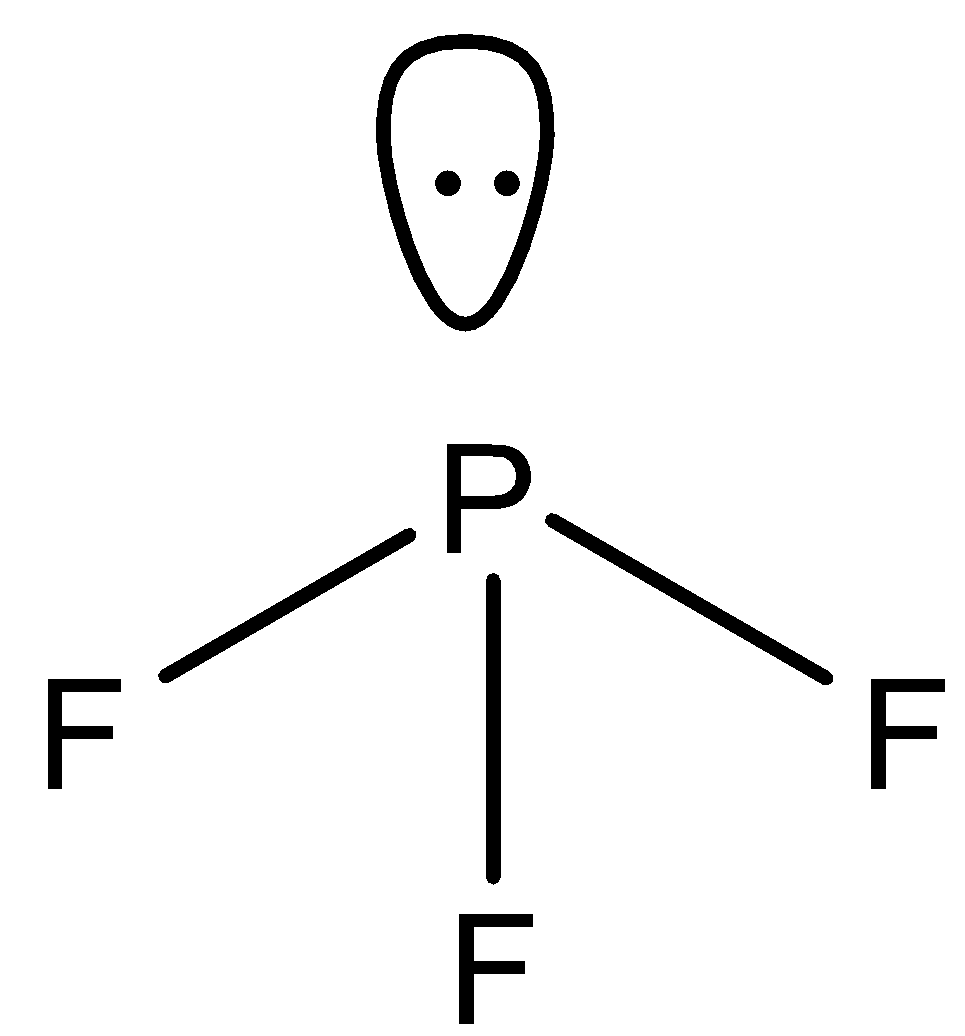
The hybridization in
(A)
(B)
(C)
(D)
Answer
475.5k+ views
Hint: In Chemistry , hybridization or the orbital hybridization is defined as the concept of mixing or merging atomic orbitals to form a new hybrid orbital which is also known as the hybridized orbital. With the help of electronic configuration, valency and the presence of lone pairs on the central atom we can predict the hybridization of any molecule.
Complete step by step answer:
So now we are somewhat aware of the term hybridization. Now to predict or figure out the hybridization of
Now from the structure we can observe that out of the five valence electrons of phosphorus. The three electrons are bonded with fluorine and the rest of the two electrons form a lone pair. Now for hybridization we count the sum of the total number of atoms bonded and the lone pair on the central atom. So, we have three bonded atoms and one lone pair so the total is four. Now if we check the option the sum of the orbital is four in
Therefore, the correct option is (A).
Note:
The hybridization helps in predicting the geometry or the shape of the molecule. If the hybridization of a molecule is
Complete step by step answer:
So now we are somewhat aware of the term hybridization. Now to predict or figure out the hybridization of
Now from the structure we can observe that out of the five valence electrons of phosphorus. The three electrons are bonded with fluorine and the rest of the two electrons form a lone pair. Now for hybridization we count the sum of the total number of atoms bonded and the lone pair on the central atom. So, we have three bonded atoms and one lone pair so the total is four. Now if we check the option the sum of the orbital is four in

Therefore, the correct option is (A).
Note:
The hybridization helps in predicting the geometry or the shape of the molecule. If the hybridization of a molecule is
Recently Updated Pages
Master Class 11 Economics: Engaging Questions & Answers for Success

Master Class 11 Business Studies: Engaging Questions & Answers for Success

Master Class 11 Accountancy: Engaging Questions & Answers for Success

Master Class 11 English: Engaging Questions & Answers for Success

Master Class 11 Computer Science: Engaging Questions & Answers for Success

Master Class 11 Maths: Engaging Questions & Answers for Success

Trending doubts
Which one is a true fish A Jellyfish B Starfish C Dogfish class 11 biology CBSE

State and prove Bernoullis theorem class 11 physics CBSE

1 ton equals to A 100 kg B 1000 kg C 10 kg D 10000 class 11 physics CBSE

In which part of the body the blood is purified oxygenation class 11 biology CBSE

One Metric ton is equal to kg A 10000 B 1000 C 100 class 11 physics CBSE

Difference Between Prokaryotic Cells and Eukaryotic Cells




